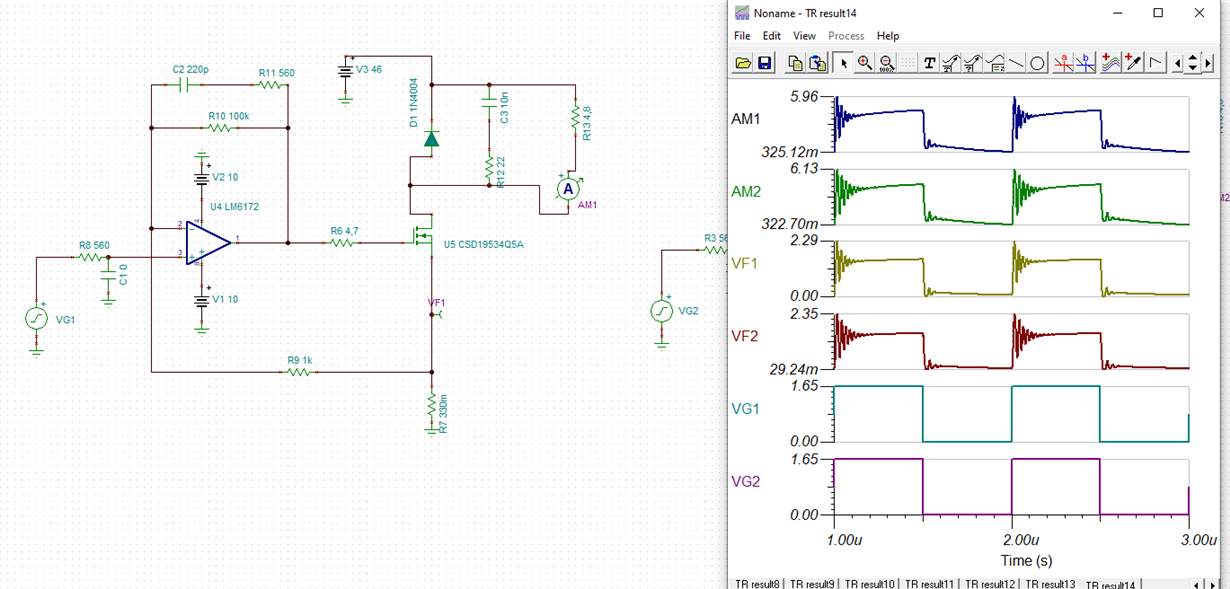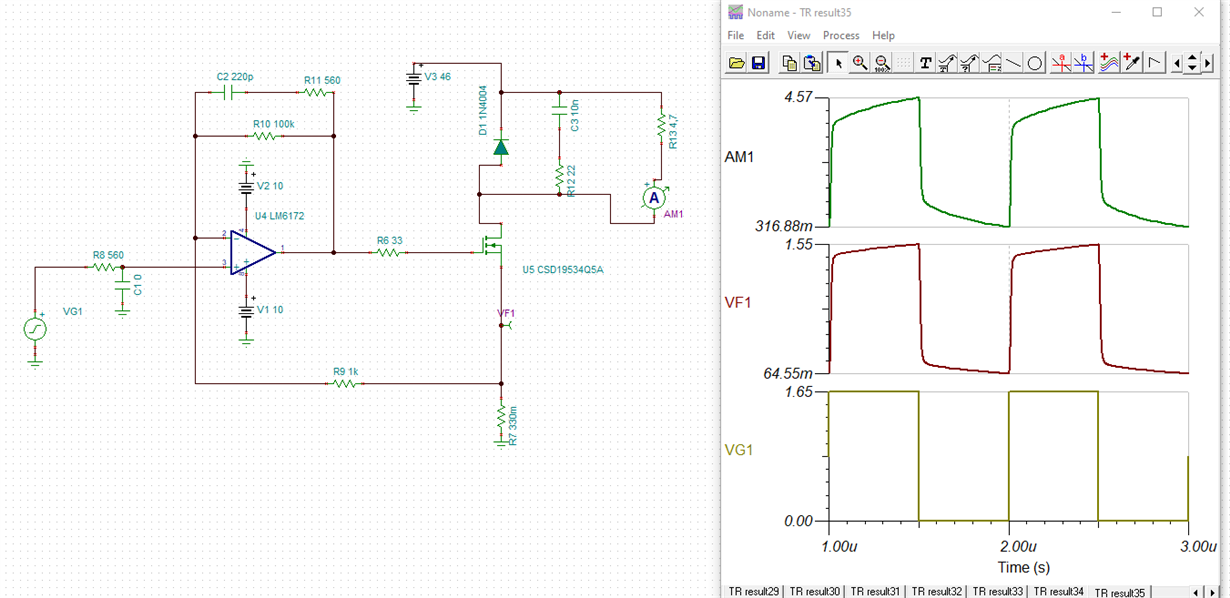Other Parts Discussed in Thread: CSD19534Q5A, TINA-TI, OPA2690, THS3122
Team,
we worked with LM6172 simulation for a while to have the noise simulation also working.
Can you please help to check / validate our simulation? Link: LM6172_CSD19534Q5A.zip
1) Output_mos_LM6172_CSD19534Q5A_ref.TSC , we used:
LM6172 -> Spice Macro within Tina-TI
-> downloaded slpm324.zip CSD19534Q5A TINA-TI Spice Model
2) Output_mos_LM6172_CSD19534Q5A_PSPICE.TSC, we used:
LM6172 -> Spice Macro within Tina-TI
CSD19534Q5A -> downloaded slpm119a.zip CSD19534Q5A PSpice Model and imported to tina-TI
3) There are two models of CSD19534Q5A on web page with different release date as mentioned above in two simulations:
a) Are the two models the same, or is one better than the other?
b) Do these model the Qg, Qgd, Qgs? Or rather Cgs, Cgd?
4) Regarding LM6172:
a) there is a model in Tina-ti for it - is this the same model as on the web page snom234.zip?
b) can you provide the latest model that you have?
c) Do we have a drop in replacement that has similar price performance ratio?






